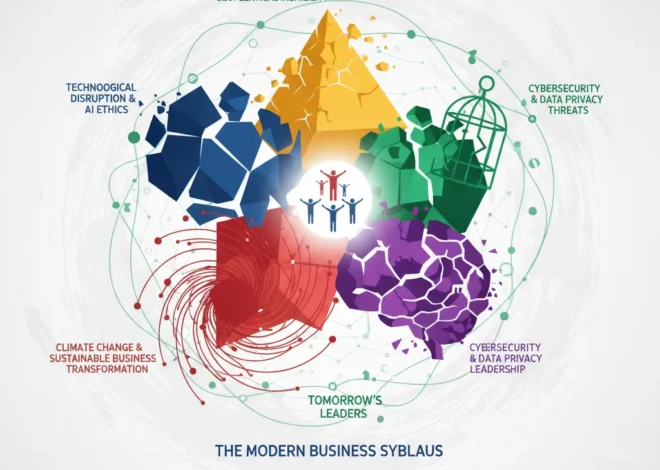
Red Flags Over the Dragon: Why China’s Military Shake-Up Demands Your Financial Attention
In the world of global finance and investing, signals can come from the most unexpected quarters. While traders and algorithms are programmed to react to inflation data and central bank announcements, a different kind of tremor is emanating from Beijing—one that has profound implications for the global economy, the stock market, and your portfolio. A sweeping military purge, orchestrated by President Xi Jinping, is raising serious questions not just about China’s internal stability, but about its readiness for a potential conflict over Taiwan. For business leaders and investors, ignoring these developments is no longer an option.
At first glance, the removal of high-ranking generals from the People’s Liberation Army (PLA) might seem like a distant political drama. However, this is far more than a simple anti-corruption sweep. The targets of this purge are not just any commanders; they are the leaders of the elite PLA Rocket Force, the very unit responsible for China’s nuclear arsenal and the conventional missiles aimed at Taiwan. This unprecedented shake-up, as reported by the Financial Times, is sending shockwaves through the intelligence community and should be a blaring siren for anyone involved in international finance.
The Anatomy of a Purge: What’s Happening Inside the PLA?
The scale of the recent changes within China’s military leadership is staggering. The commander and the political commissar of the PLA Rocket Force were abruptly replaced, along with the force’s deputy commander. These individuals haven’t just been reassigned; they have effectively vanished from public view, with reports suggesting they are under investigation for corruption. This follows the disappearance of China’s defense minister, Li Shangfu, who was removed from his post after just a few months on the job.
Why does this specific unit matter so much? The PLA Rocket Force is the centerpiece of China’s strategy to deter the United States and, if necessary, execute a swift invasion of Taiwan. It controls everything from intercontinental ballistic missiles (ICBMs) capable of hitting the U.S. mainland to the short- and medium-range missiles designed to cripple Taiwanese defenses and keep American naval forces at bay. According to analysts cited by the Financial Times, the purge suggests that Xi Jinping may have uncovered deep-seated problems—ranging from graft to operational deficiencies—that call into question the Rocket Force’s ability to “fight and win wars.”
This isn’t merely an internal house-cleaning. It’s a sign that Xi, who has staked his legacy on rejuvenating the Chinese nation and “reunifying” with Taiwan, may have lost confidence in the very commanders he would depend on to carry out his most critical geopolitical objective. The implications are twofold and contradictory: either the PLA is less capable of launching a complex military operation than previously thought, or Xi is ruthlessly clearing the deck of anyone not fully committed to his timeline, making the military more politically reliable, if not immediately more competent.
Grounded Nation: How Airport Chaos Reveals Deep Fissures in the US Economy
From Barracks to Balance Sheets: The Economic Ripple Effect
For those in finance, banking, and economics, the critical question is how this military uncertainty translates into market risk. The connection is direct and multifaceted. Any instability surrounding Taiwan, the world’s semiconductor powerhouse, poses an existential threat to the global supply chain. This isn’t a theoretical risk; it’s a clear and present danger to the technological backbone of the modern economy.
Consider the potential fallout. A conflict or even a blockade of Taiwan would instantly halt the production of advanced microchips that power everything from iPhones and electric vehicles to the servers underpinning financial technology (fintech) and cloud computing. The resulting economic shockwave would dwarf the impact of the COVID-19 pandemic and the war in Ukraine. It would trigger a global recession, send the stock market into a tailspin, and force a painful, multi-trillion-dollar realignment of the world’s industrial base.
To better understand the stakes, here is a breakdown of the potential sector-by-sector impact of heightened military tension in the Taiwan Strait:
| Economic Sector | Potential Impact of Taiwan Strait Instability |
|---|---|
| Technology & Semiconductors | Catastrophic disruption. TSMC alone produces over 90% of the world’s most advanced chips. A halt would create a global tech depression. |
| Global Shipping & Logistics | The Taiwan Strait is one of the world’s busiest shipping lanes. A blockade would snarl global trade, spike shipping costs, and create massive delays. |
| Finance & Banking | Extreme market volatility. Global banks would face massive losses on investments tied to the region. The insurance industry would face unprecedented claims. |
| Automotive & Manufacturing | Production lines would grind to a halt due to chip shortages. The transition to EVs and smart manufacturing would be severely set back. |
| Energy Markets | Disruption to LNG and oil tanker routes would cause energy price spikes, fueling global inflation and impacting the broader economy. |
This table illustrates that the PLA’s internal struggles are not a localized issue. They are a critical variable in the equation of global economic stability. Investors must now factor in a higher geopolitical risk premium when evaluating assets with exposure to China and the wider Asia-Pacific region. Traditional trading models based on economic fundamentals are insufficient when a single political decision could vaporize trillions in market value.
Rethinking Investment in an Era of Unprecedented Risk
So, what are the actionable takeaways for those in business and finance? The first is the urgent need for supply chain diversification. For decades, the global economy has benefited from the hyper-efficient, just-in-time manufacturing centered in East Asia. That model is now broken. Companies must accelerate efforts to onshore, near-shore, or “friend-shore” critical production, even if it comes at a higher cost. The price of inefficiency is far lower than the price of non-existence in a crisis.
Secondly, investors must re-evaluate their exposure to China. The narrative of China as an unstoppable engine of economic growth is being replaced by a more sober assessment of its political risks. This doesn’t necessarily mean complete divestment, but it does require a more sophisticated approach to investing. This includes hedging against currency fluctuations, using advanced trading strategies to navigate volatility, and prioritizing investments in sectors and regions that are insulated from a potential U.S.-China conflict.
The world of financial technology also has a role to play. Advanced AI and data analytics can help firms monitor geopolitical risk in real-time, scraping news, social media, and even satellite imagery for signs of escalating tensions. Blockchain technology, often discussed in the context of cryptocurrencies, could also find new relevance in securing and verifying supply chains, offering a transparent ledger to track goods and components as they move through increasingly fractured global trade routes. As experts have noted, understanding the operational readiness of the PLA is now as important as understanding the Federal Reserve’s dot plot.
Finally, this situation underscores a fundamental shift in economics and investing. For the past thirty years, the prevailing assumption was that economic integration would lead to political moderation. That assumption has been shattered. We are now in an era where geopolitics is a primary driver of market outcomes. A solid understanding of international relations, military strategy, and political science is becoming just as crucial for a portfolio manager as a deep knowledge of financial statements. The lines between Wall Street, Washington, and Beijing have blurred into a single, complex risk landscape.
Beyond Brexit: The New Fault Lines Shaping the UK Economy and Your Investment Strategy
The Bottom Line: A Market on Edge
The purges within the PLA are more than just a headline; they are a critical data point signaling deep instability at the heart of a global superpower. Xi Jinping’s consolidation of power, combined with potential weaknesses in his military, creates a dangerously unpredictable environment. For investors, business leaders, and anyone involved in the global economy, the message is clear: the ground is shifting.
The era of treating geopolitical risk as a secondary concern is over. The tremors from Beijing’s military shake-up are a warning to us all. Preparing for the aftershocks is not just prudent; it is essential for financial survival in this new and uncertain world.


